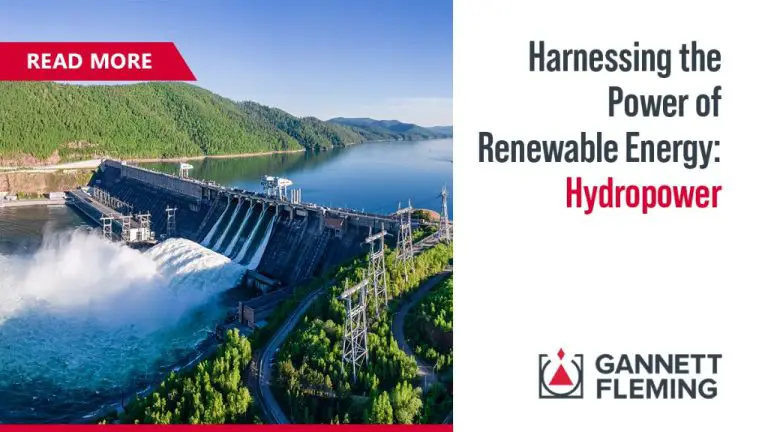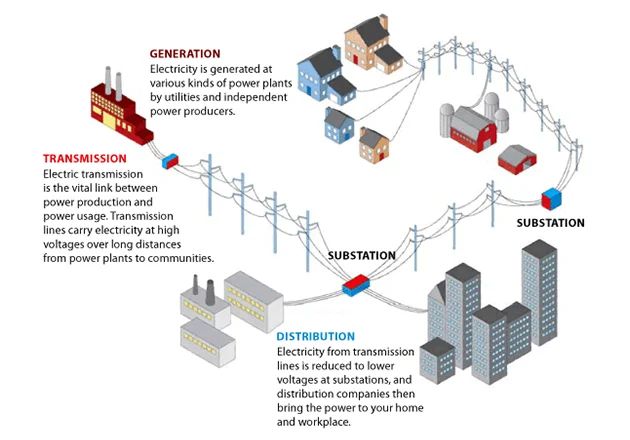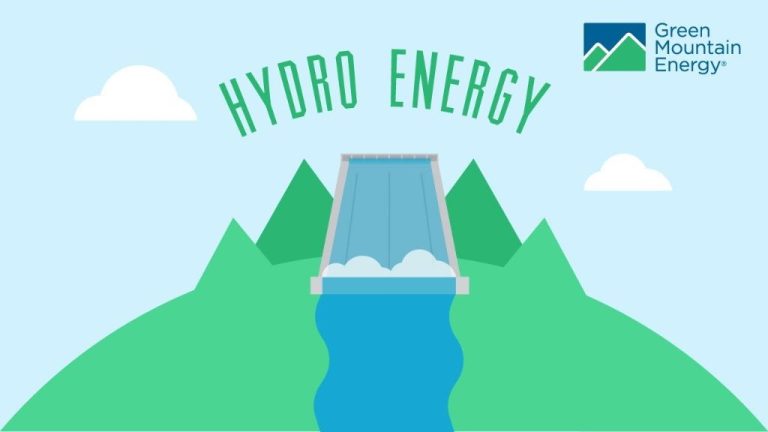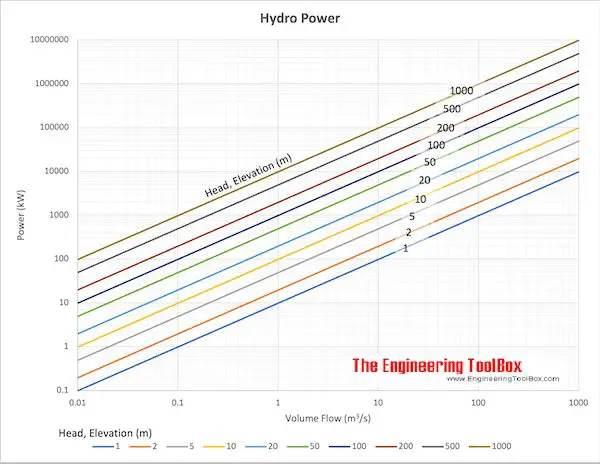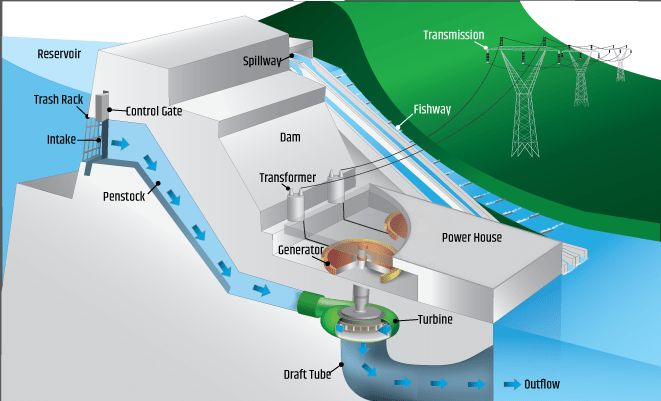How Does Hydropower Provide Drinking Water?
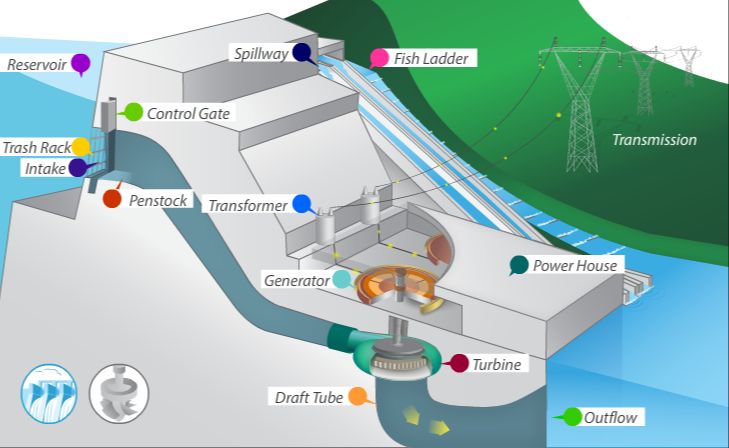
Hydroelectric power provides drinking water through a process of harnessing the energy from flowing water to generate electricity. Dams are constructed on rivers to create reservoirs, which store water that can be used to drive turbines connected to electric generators. The reservoirs not only store energy potential but also provide a source of freshwater that can be purified and delivered for drinking purposes.
This article will provide an overview of how hydropower facilities generate electricity while also supplying clean drinking water to communities. We will explore the basics of hydropower, how reservoirs store and purify water, the distribution process, regulations, environmental considerations, and examples of hydropower and drinking water systems around the world.
Hydroelectric Power Basics
Hydropower plants use the energy of flowing water to generate electricity. A dam is constructed to store water in a reservoir, creating a height difference between the reservoir’s water level and the river below the dam1. Water can then be released from the reservoir through intake gates and directed into pipes called penstocks. As the water flows through the penstock, it turns blades in a turbine to spin a generator to produce electricity2. The amount of electricity that can be generated depends on the volume of water flow and the height difference.
Reservoirs Provide Freshwater
Reservoirs created by hydropower dams store massive amounts of fresh water that is essential for drinking and general consumption. Reservoirs serve as our most important storage facilities for freshwater supplies (https://theworld.org/stories/2016-10-29/reservoirs-are-sources-drinking-water-hydropower-and-tons-greenhouse-gases). The large surface areas allow sunlight to penetrate and eliminate bacteria and impurities. Reservoirs act as settlement ponds, letting sediment and debris sink to the bottom, which leads to natural purification. The water stored in hydropower reservoirs can be treated and processed at facilities along the shore to make it safe for human consumption. After testing and purification, the freshwater in reservoirs becomes potable and suitable for drinking.
Water Purification Process
Reservoir water goes through an extensive purification process to remove contaminants and make it safe for drinking. Here are the typical steps involved in purifying reservoir water into clean drinking water:
Coagulation and Flocculation – Chemicals like aluminum sulfate and ferric chloride are added to the reservoir water, causing small particles to stick together and form larger clumps called floc. This makes the particles easier to remove.
Sedimentation – The water flows into large sedimentation tanks where the floc sinks to the bottom and is removed.
Filtration – The water then passes through filters made of layers of coal, gravel, and sand. These filters trap any remaining particles and impurities.
Disinfection – Chemical disinfectants like chlorine, chloramine, or ozone are added to kill any viruses, bacteria, or other pathogens. The water is stored briefly to ensure full disinfection.
According to the CDC, the disinfection step alone removes or inactivates 99.9% of pathogens. https://www.cdc.gov/healthywater/drinking/public/water_treatment.html
Additional steps like fluoridation or corrosion control may also be included before the purified drinking water is ready to be distributed to homes and businesses.
Water Distribution
Water distribution systems transport drinking water from reservoirs and treatment plants to homes, businesses, schools, and other facilities. The water is distributed through an underground network of pipes, pumps, valves, storage tanks, and other infrastructure.
After water is treated at a purification plant, it enters the distribution system. The water first flows into large transmission mains, which are pipes 12 inches or more in diameter. Transmission mains transport large volumes of water over long distances. The water then flows into smaller distribution mains, typically 4 to 12 inches in diameter. Finally, service lines carry water from the distribution mains to individual buildings and properties.
Pumps provide the pressure needed to move the water through the distribution system. Storage tanks help control water pressure and provide emergency reserves. Valves allow sections of the system to be isolated for maintenance or repair. The system is monitored by operators to ensure water quality and adequate pressure.
Proper maintenance of the distribution system is critical to prevent contamination and leaks. Water utilities follow regulations for regular cleaning, pipe replacement, corrosion control, and disinfection. Despite best efforts, an estimated 6 billion gallons of treated drinking water are lost per day in the U.S. due to leaks in aging distribution infrastructure. Investing in renewal and upgrades of these systems is an ongoing need.
Regulations and Treatment
The United States Environmental Protection Agency (EPA) sets legal limits on over 90 contaminants in drinking water under the Safe Drinking Water Act (SDWA). The legal limit for a contaminant reflects the level that protects human health and prevents aesthetic issues like bad taste or odor (Drinking Water Regulations | US EPA).
The EPA’s National Primary Drinking Water Regulations (NPDWR) are legally enforceable standards that apply to public water systems. These standards protect public health by limiting the levels of contaminants in drinking water. The regulations include both mandatory levels, called maximum contaminant levels (MCLs), and non-enforceable levels, called maximum contaminant level goals (MCLGs) (National Primary Drinking Water Regulations | US EPA).
If testing reveals contaminants exceeding the legal limits, the public water system must treat the water to remove or reduce the contaminants to acceptable levels. Common drinking water treatment processes include coagulation and flocculation, sedimentation, filtration, disinfection, and pH adjustment.
Environmental Considerations
While hydropower is a renewable energy source, hydroelectric dams and reservoirs can have significant environmental impacts. Building a dam floods large areas of land, altering natural habitats and ecosystems. For example, the Three Gorges Dam in China created a reservoir that flooded 13 cities, 140 towns, and 1,350 villages, displacing over 1.4 million people.
Dams disrupt rivers and the natural migration of fish like salmon. The reservoirs themselves alter water temperatures and oxygen levels. Rotting vegetation flooded by the reservoir produces greenhouse gases like carbon dioxide and methane. Sediment that normally flows downriver builds up behind dams, resulting in less nutrients reaching downstream habitats.
However, steps can be taken to mitigate the negative effects. Engineers can design “fish ladders” that allow fish to travel upstream and downstream. Dam operators can release water from deeper parts of the reservoir to avoid discharging warm, oxygen-poor water. Sediment sluiceways can be built into dams to allow some sediment passage. Operators can also adjust water flow patterns to be more natural. Careful dam placement can reduce flooded areas.
Ultimately, hydropower developers must balance electricity generation with environmental stewardship. With proper planning and mitigation, hydropower can be harnessed more sustainably. Though some alteration of the natural ecosystem is inevitable, impacts can be minimized through strategic dam planning and innovative engineering solutions.
Examples Around the World
Major hydropower projects play a critical role in providing drinking water to communities around the world. According to Wikipedia, some of the largest hydropower stations in the world also supply water for municipal and industrial use:
The Three Gorges Dam in China is the world’s largest power station with 22,500 MW of installed capacity. Its massive reservoir supplies water to over 300 million people in the region [1].
The Itaipu Dam on the Brazil/Paraguay border has 14,000 MW of capacity making it the second largest hydroelectric power plant globally. Its reservoir provides drinking water to around 80% of the residents of Paraguay [1].
The Grand Coulee Dam in the United States is the 5th largest hydroelectric station with 6,809 MW of power. Its reservoir supplies irrigation water to over 671,000 acres of farmland and provides municipal water supplies [2].
The Sayano–Shushenskaya Dam in Russia ranks number 6 worldwide with 6,400 MW capacity. Its reservoir provides water to metallurgical, chemical, and pulp-and-paper plants in the region [3].
The Future of Hydropower
Hydropower has significant potential for future growth and expansion, especially with improvements in sustainability and environmental practices. According to the International Energy Agency (IEA), hydropower could maintain an annual growth rate of close to 4% through 2030 to meet rising electricity demands globally (https://www.iea.org/energy-system/renewables/hydroelectricity). The United States Department of Energy (DOE) also notes the immense untapped potential in existing dams and conduits that could be retrofitted for hydropower generation (https://www.energy.gov/eere/water/articles/hydropower-key-clean-energy-future-heres-why).
Several key focus areas can further improve hydropower sustainability and growth in the future:
- Upgrading existing infrastructure with more efficient, fish-friendly turbines and operations that better maintain downstream flows.
- Retrofitting non-powered dams, canals, pipelines, and other water conduits with new hydropower capabilities.
- Developing new pumped storage hydropower facilities to store excess renewable energy.
- Improving shoreline habitat, fish passages, and sediment flows at existing hydropower sites.
- Integrating hydropower into hybrid renewable energy systems with wind, solar, and other renewables.
- Using artificial intelligence and advanced modeling to optimize dam operations and generation.
With smart investments, technological improvements, and a focus on environmental sustainability, hydropower can continue expanding as a renewable energy leader worldwide.
Conclusion
In summary, hydropower can provide clean drinking water through the use of reservoirs, water treatment processes, and distribution systems. The reservoirs created by dams store large amounts of freshwater that can be treated and supplied to homes and businesses. The water goes through filtration and disinfection processes to remove contaminants and pathogens. Regulations help ensure the water meets safety standards before being distributed to communities through vast pipeline networks. While hydropower has many benefits, it also raises environmental concerns that must be addressed regarding river flows and habitat disruption. With proper management, hydropower can continue supplying clean renewable electricity and drinking water for generations to come.
Hydropower plays an integral role in drinking water provision around the world. The reservoirs it creates act as a reliable source of freshwater that can be treated and delivered to consumers. As populations grow and climate change disrupts weather patterns, hydropower’s ability to store water and provide a consistent supply will become increasingly vital. Though other water sources exist, hydropower’s scale and efficiency make it essential for ensuring adequate clean water. With responsible environmental practices, hydropower can sustainably deliver the water needed for healthy communities.

